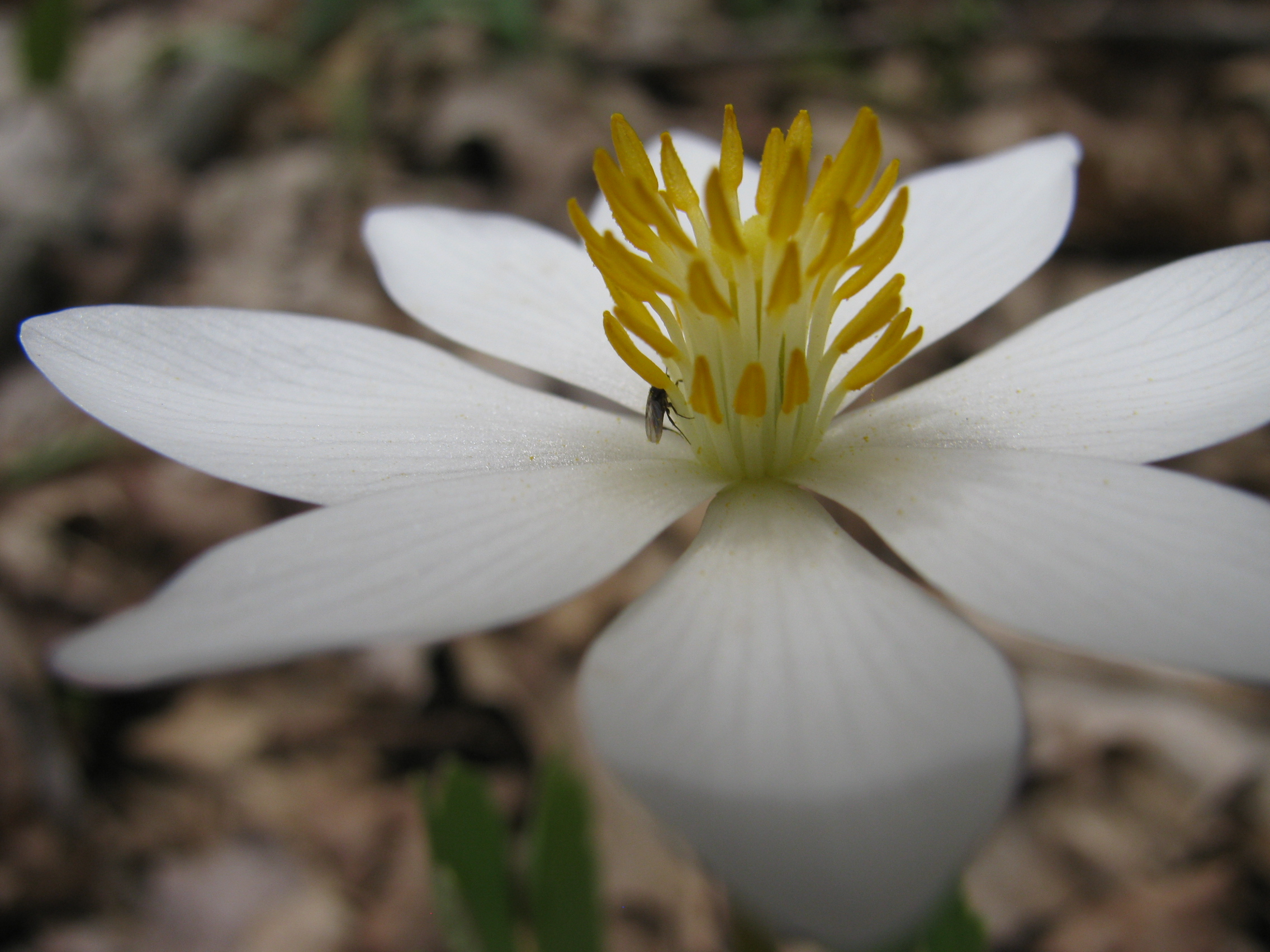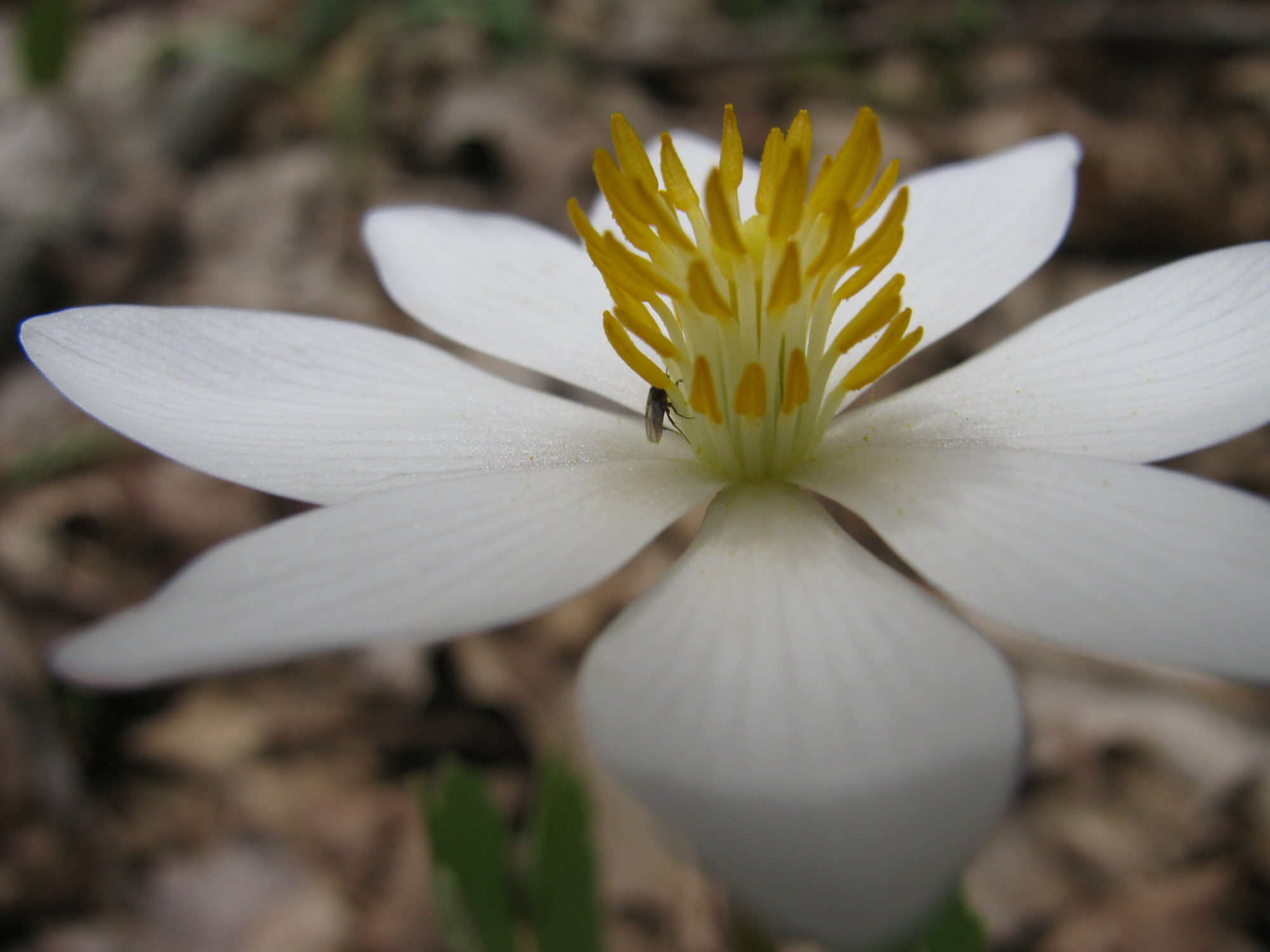I was out walking in a little forest right on campus and noticed bloodroot (Sanguinaria canadensis) flowers starting to come up. Bloodroot is a native early spring wildflower of deciduous forests. The flowers come up rolled in their own leaves, and they close at night or on rainy days.

Bloodroot flowers in rolled leaves (Sanguinaria canadensis, Papaveraceae)
Bloodroot is in the Papaveraceae or poppy family. There are quite a few native species of poppy in the Northeast and the Midwest. One easy way to identify a poppy is the white, yellow or red latex that comes out of crushed tissue. For bloodroot, the latex is obviously red. The latex from underground rhizomes (stems) was used for breathing and skin problems (Gracie, Spring Wildflowers of the Northeast, 2012).

Sanguinaria canadensis, Papaveraceae
The pistil (female part of the flower) is mature before the anthers (male parts of the flower), to prevent self-fertilization. If the flower isn’t cross-pollinated after a few days, the anthers will dump pollen onto the pistil, fertilizing the flower. This ensures that each flower will produce seed. The seeds have fleshy elaiosomes which attract ants, similar to milkworts (Gracie, Spring Wildflowers of the Northeast, 2012).

Bloodroots, like most poppies, have many stamens (Sanguinaria canadensis, Papaveraceae)

The leaves are thick, shaped like a horseshoe and persist though the summer (Sanguinaria canadensis, Papaveraceae)
